No. Lake Tahoe does not freeze. Although Lake Tahoe doesn’t get as frosty as the surrounding country in winter, the weather turns biting cold.
Read on to discover the compelling reasons why Lake Tahoe does not freeze.
Reasons Why Lake Tahoe Does Not Freeze
Lake Tahoe is an alpine lake that refers to lakes in high-altitude or mountain regions.
The common characteristic of these lakes is that they experience periods of ice cover, especially in winter.
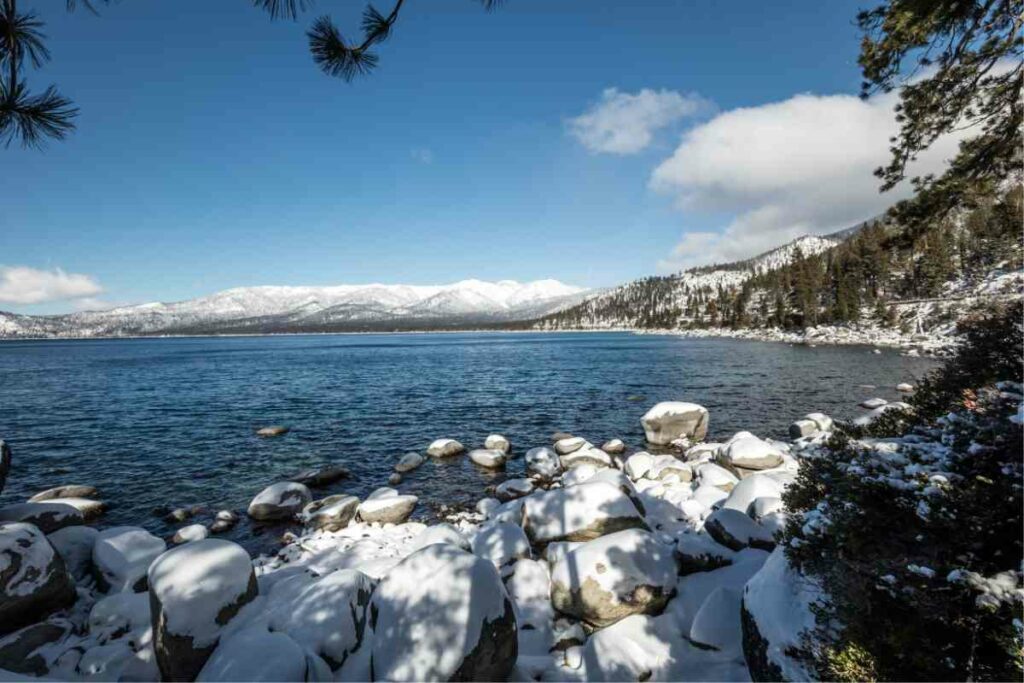
However, Lake Tahoe has a unique phenomenon. It does get freezing temperatures but remains unfrozen.
The lake sits between two states, California and Nevada, at 6,225 ft. above sea level. It is the largest lake at that altitude in North America.
At over 1,600 feet deep, it remains the second deepest lake in the country after Crater Lake.
Due to its inability to freeze, Lake Tahoe receives thousands of visitors all year round for various attractions.
The most popular spots are the ski and snow resorts that surround it during winter. But why doesn’t Lake Tahoe freeze? There are multiple reasons why this happens.
Lake Tahoe Covers A Wide Surface Area
The lake extends over 20 miles long, with its shores covering around 72 miles of land. Its width is 12 miles, and its entire surface area is about 190 square miles.
The large water body contains almost 40 trillion gallons of water. On average, the water temperature on the lake remains at over 60 degrees.
For such a massive body of water, it would require several months of icy weather for it to freeze.
The Water In Lake Tahoe Is Constantly Moving
Water has to become dense before ice crystals start to form.
Since the water in Lake Tahoe is constantly moving, it does not settle enough; hence it becomes difficult to freeze.
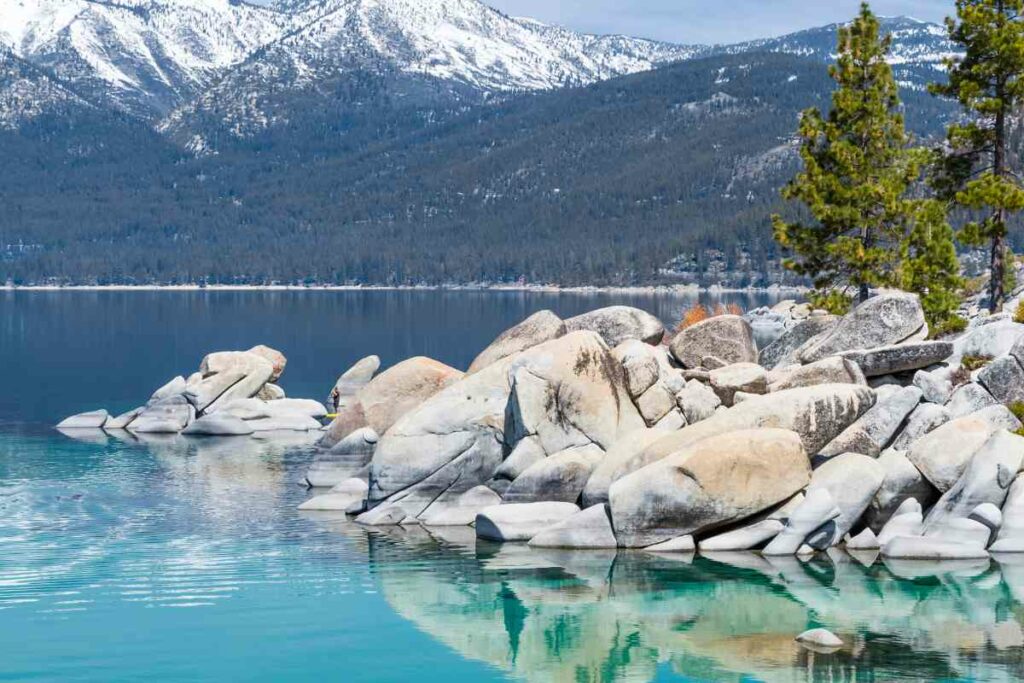
The movement happens throughout, whether or not there are activities on the lake.
As a result, cold air cools down the water on the surface. The cool water then circulates downwards as the warmer water in the lake moves upwards.
It is a continuous process that prevents the water from reaching freezing temperatures and forming ice crystals.
The Weather On Lake Tahoe Remains Summery
Lake Tahoe sits between two states that experience relatively warm weather throughout the year, meaning the temperatures remain reasonably sunny.
Although it gets frigid during winter, it is too short a time to freeze the water.
Ice formation requires below-freezing temperatures over a long period, which is impossible in Lake Tahoe.
However, some protected bay sections tend to form ice on the surface, but this does not affect the rest of the lake.
5 Fun Facts About Lake Tahoe
Lake Tahoe is captivating for several reasons. There is so much you can do in Lake Tahoe.
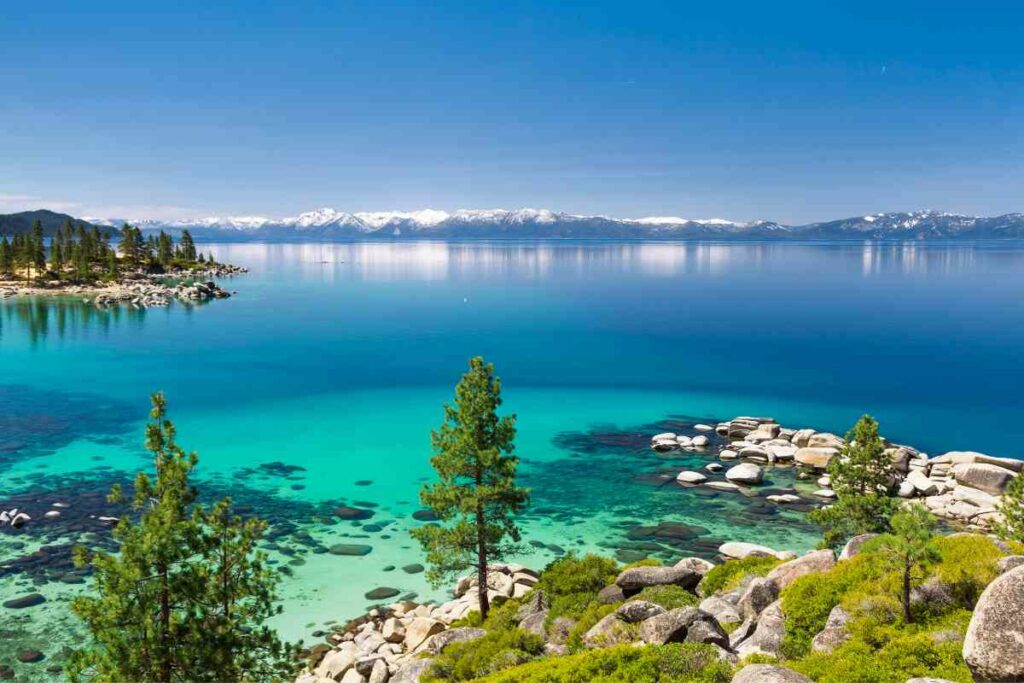
From biking, skiing, hiking and simply enjoying the surrounding pine forests, this is undoubtedly one of the scenic places to be.
We learned a lot of fun things about Lake Tahoe from our recent visit. Check out these amazing facts about Lake Tahoe.
1. It does snow in Lake Tahoe
Snow does fall in the lake’s surrounding areas, especially along the western shores. Winter begins around November and can last up to April.
However, the coldest temperatures are from December to March, when snow depths are about 190 inches.
Despite these freezing temperatures, the lake water remains relatively warmer.
2. Lake Tahoe only has one outlet
The original outlet in Lake Tahoe blocked thousands of years ago due to the constant movements of icebergs in the mountains.
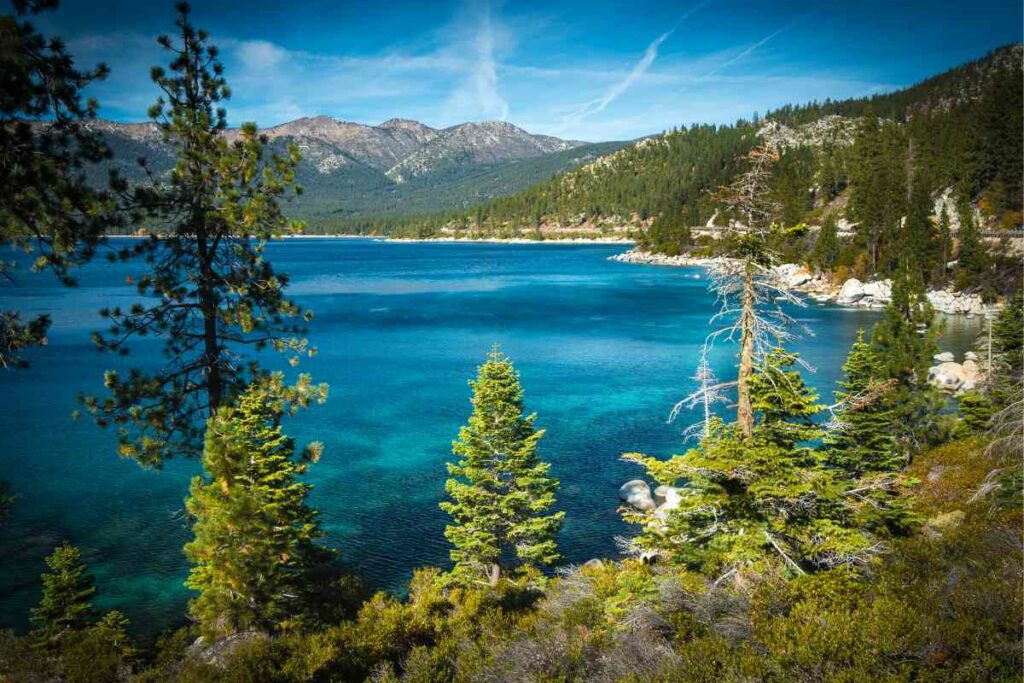
As a result, only one outlet remains today: the Truckee River through the Tahoe City dam.
Although tens of streams flow in from the hills, only a third of the water gets to the river.
3. The water in Lake Tahoe is almost 99% pure
As crystal clear as the water at Lake Tahoe is, it is equally pure enough to drink. As one of the few lakes worldwide with naturally pure water, Lake Tahoe owes its water purity to its surroundings.
Direct rainfall provides 40% of the lake’s water, with the snow in the mountains filtering the rest of the flowing water.
4. Lake Tahoe is millions of years old
The natural dam that forms Lake Tahoe resulted from a fault that changed the tectonic plates in the mountain ranges.
The lake’s creation happened over 2 million years ago, making Lake Tahoe one of the oldest lakes in the world.
5. Lake Tahoe is translucent
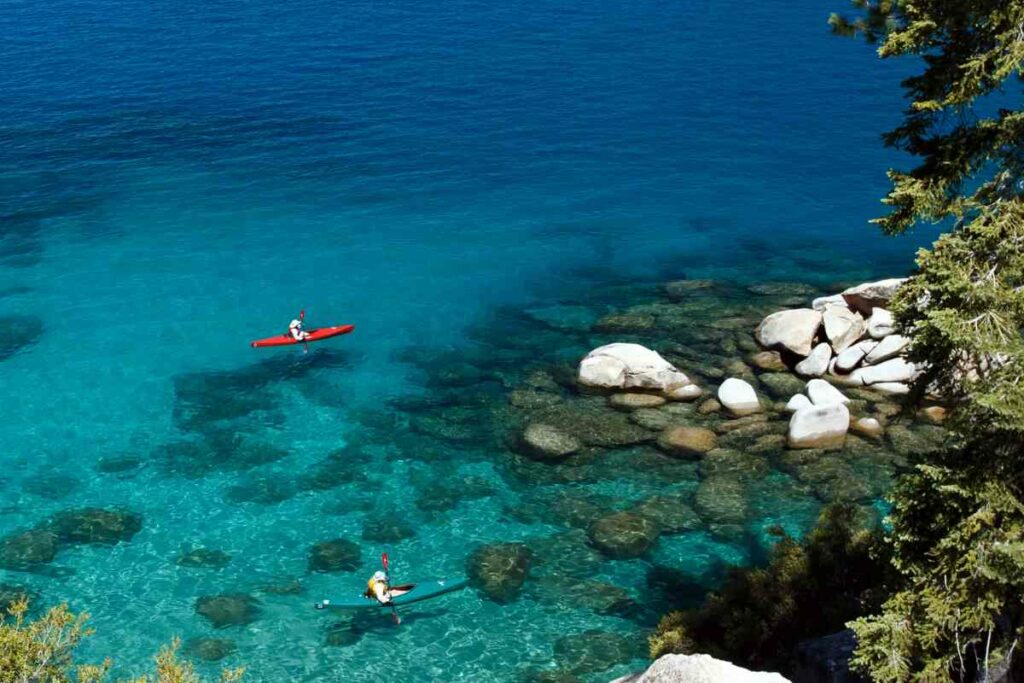
The lake is clear, and its depths are visible over 60 feet below the water’s surface. One can see the rocks below from a high point, making it a photography wonder.
Although the water can be pretty cold, it is common to find swimmers attempting to swim across the lake. The number one reason why it remains a popular tourist destination.
Conclusion
Although it would be fun to have Lake Tahoe freeze enough for winter sports activities, it is impossible. The water body is too large for such an occurrence.
The striking blue contrast it provides against the pure white ice-cold backdrop of the mountains is breathtaking.









